A Rising Useless Class
When artificial intelligence replaces our job, what will we become? How should we face the new reality where we have little to contribute to society?
This might seem very far away, but in China, automation and AI has already started to displace the less privileged. A class of useless people, which is coined by the scholar Yuval Harrari in the book Homo Deus, is emerging on the streets of Shenzhen and they call themselves 三和大神/ Sanhe Gods.
Sanhe Gods
The Sanhe gods were originally aspiring migrant workers from the countryside who came to Shenzhen aspiring to live a better life. However, most of them could not find a stable job and became Sanhe gods.
The community has a culture of ‘work one day so that you can play for three days’. They call themselves gods as they have transcended the desire for climbing up the social ladder, living a carefree life without goals nor aspirations.
With the AI revolution further widening the social gap, we can even expect those originally hard-working folks getting replaced by AI. An ‘useless class’ will begin to emerge and grow in the society.
Yuval Harrari worries that the problem of the ‘useless class’ is not just the loss of jobs or income, but more of a sense of despair when you are locked out of the only perceived way of a meaningful life. You will lose your hope in life and find it harder and harder to get up in the morning to do anything.
In response to the issue, I imagined a community for the Sanhe gods where they could have a new set of aspirations in life so that they can still live a purposeful life even after they are replaced by AI.
This new community builds on the grounds of the Sanhe Talent Market, where every useless class can now have a new start to build his future. Since they are unable to progress in life by earning money, we can introduce another form of progression, which is in terms of social-credit scores through contribution to the community.
The social credit system we have is very much like the quest and reward system in role playing games. As players complete quests, they gain experience, level up, unlock new spaces and receive items to play the game better.
Their ultimate reward for finishing the game is to upload their consciousness into the digital world where they could be whoever they want in a virtual heaven.
The Tower of Aspiration
The tower houses the key industry of the community which is e-waste recycling. It is a symbol of the progression of the useless.
This progression contrasts the current condition of the workers in Shenzhen, where they are only exploited for their youth. Once they cease to be competitive, they will be abandoned like e-waste. Whereas here, like how e-wastes are slowly turned into gold, there is a definite path to advance upwards. For each higher level you reach, you will become more valuable for the community. Eventually, you become immortalized as a testament for all.
Bottom-up Urban Transformation
With the raw materials extracted from the makerspace, the current urban villages can be slowly transformed by its residents in a bottom-up manner.
First, the nodes are added and linked to the factory tower with skywalk. These surveillance poles are also added to reinforce the current buildings, to support the placement of additional roof structures.
Gradually, as the residents in the community level up and get more rewards, they can pool their points together to improve the community by growing the civic spaces up to their preference. They could also use the regenerative node to build better housing on the existing structure of urban village.
Eventually, as the engineers and inventors in the makerspace create new schematics, each of the neighborhoods can grow in very different directions.
Conclusion
This is the story of a community where the Useless Class rejected by the AI revolution could gain a new life and a new purpose.
Unlike the constantly changing world where you really do not know what you can do in life, this community assures the Useless class with a definite goal in life, which is the promise of digital immortality.
To ensure they are motivated to finish the long race to a new life, we use a game-like progression system where the residents can have constant feedback and rewards to keep them motivated.
While the progression and quest system within the tower is governed by AI. Back in the villages, residents still have the freedom to shape their living spaces and amenities, which will give them a small window for creativity and foster a strong sense of belonging to the community.
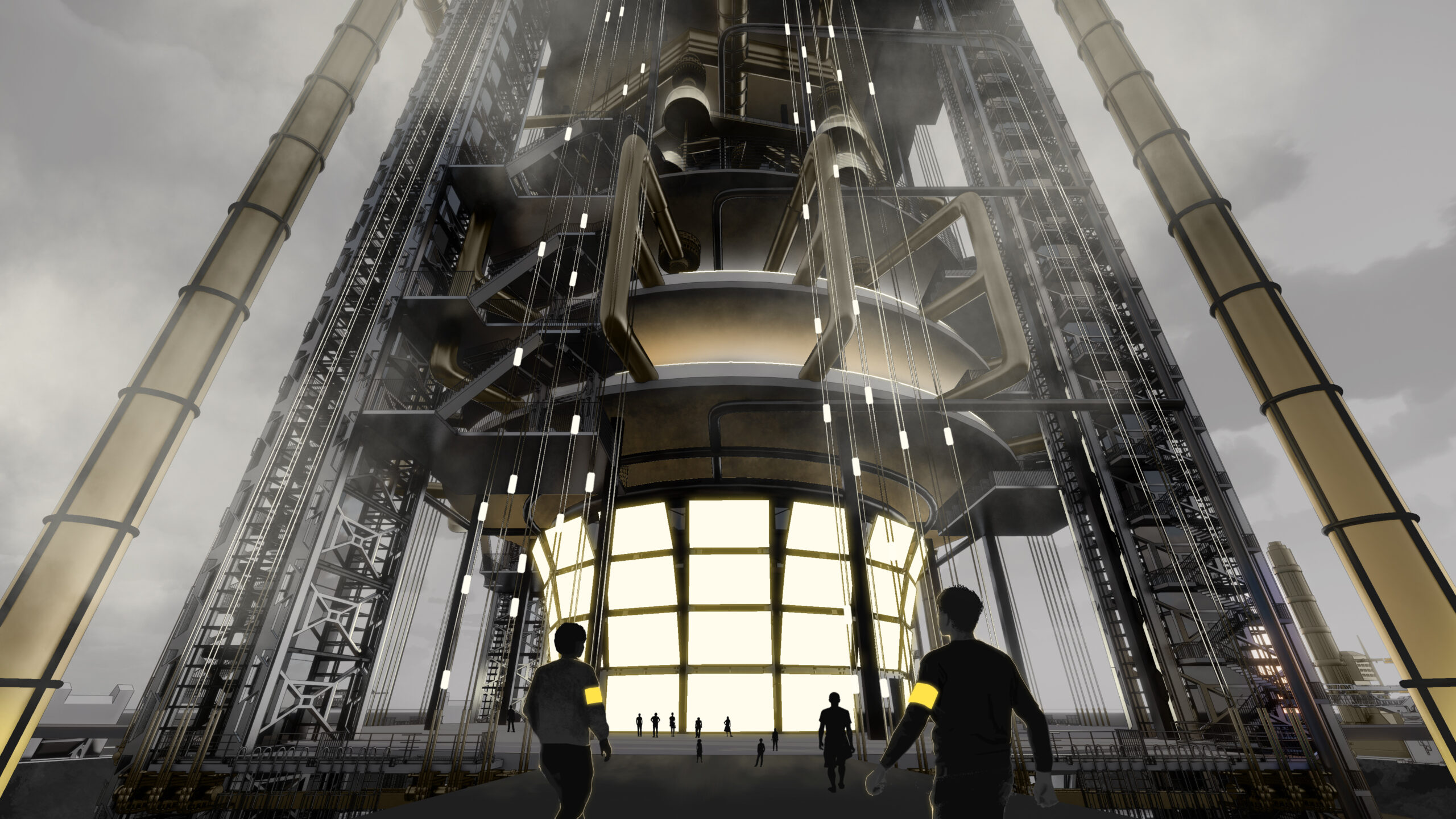
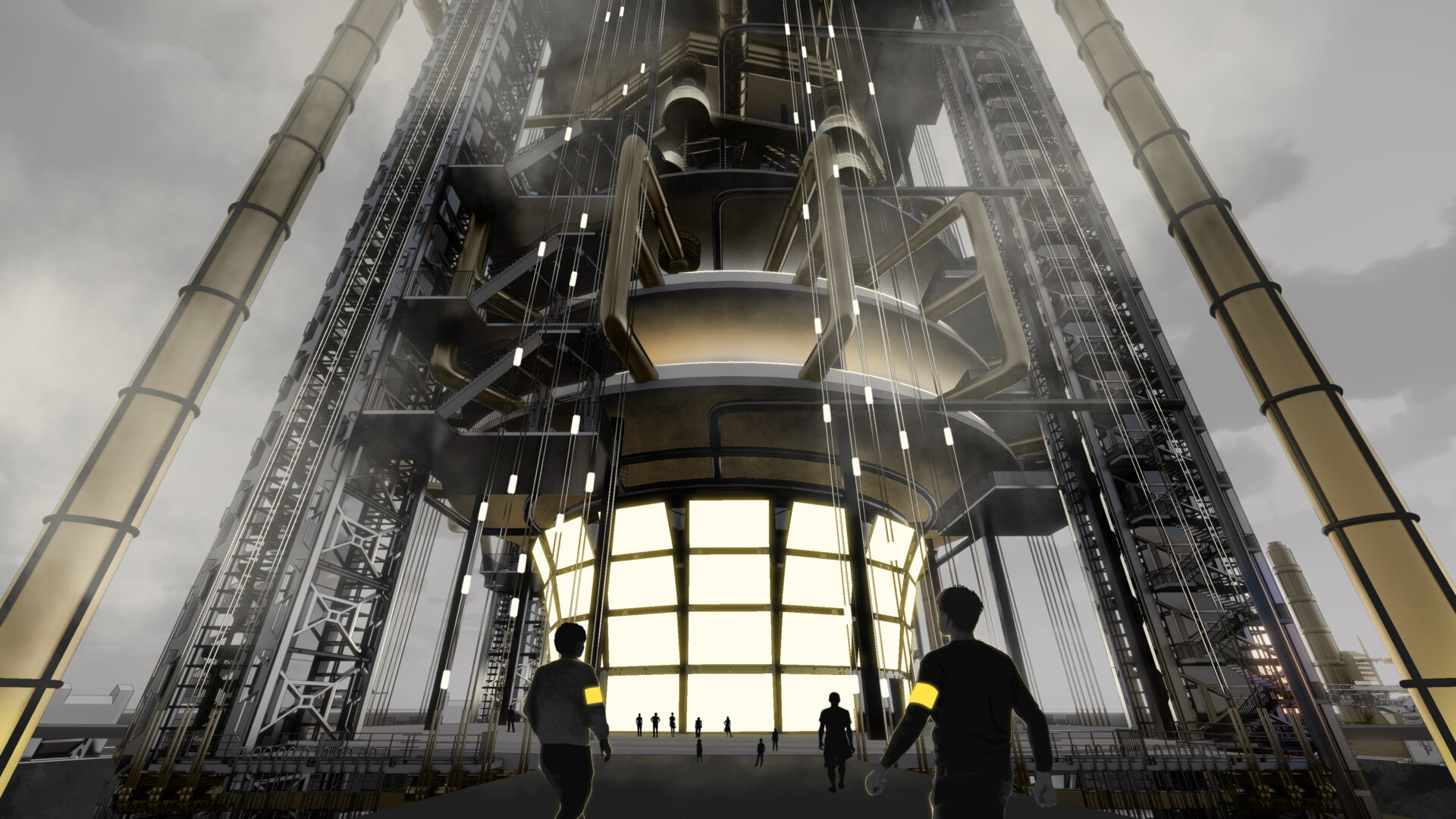
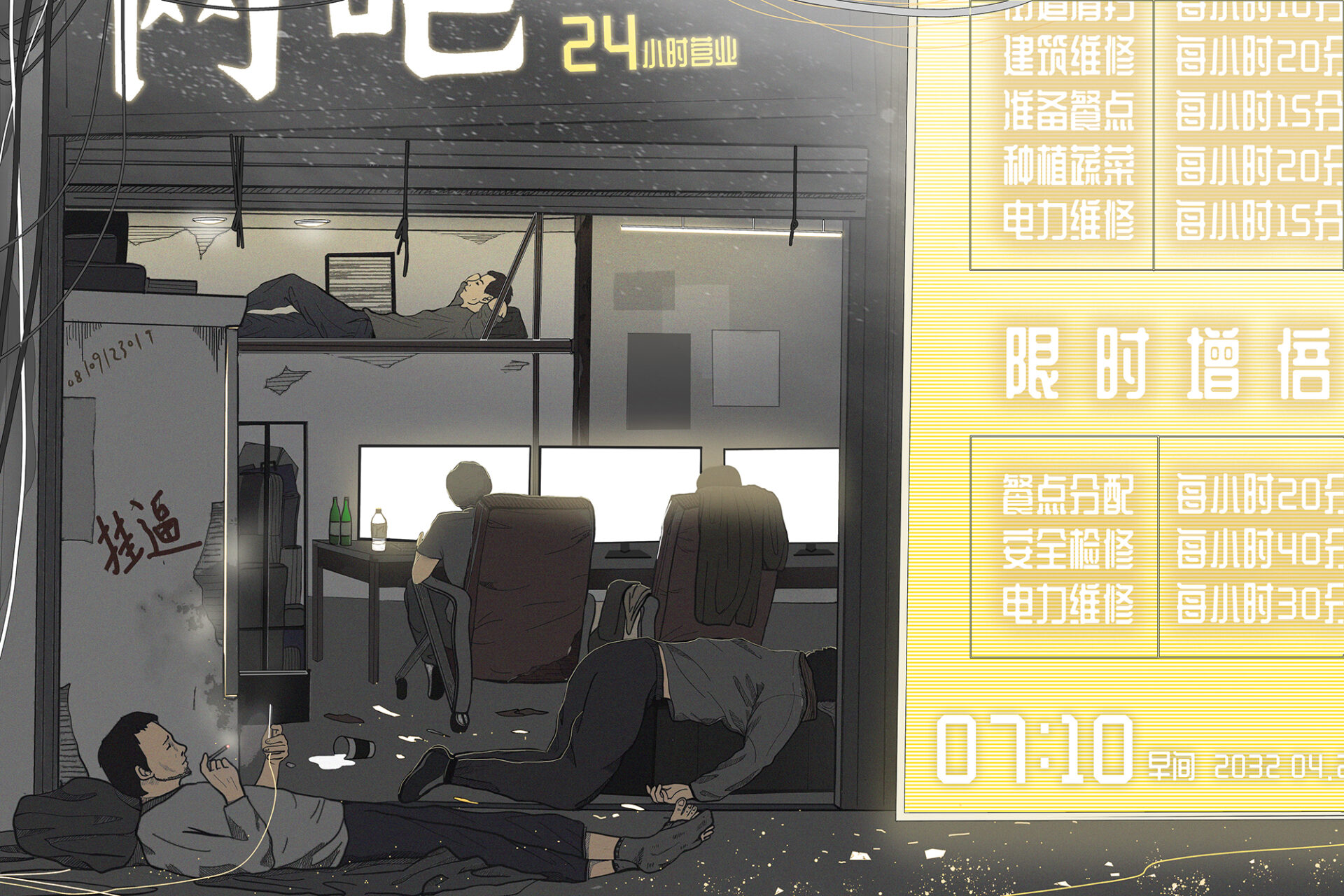
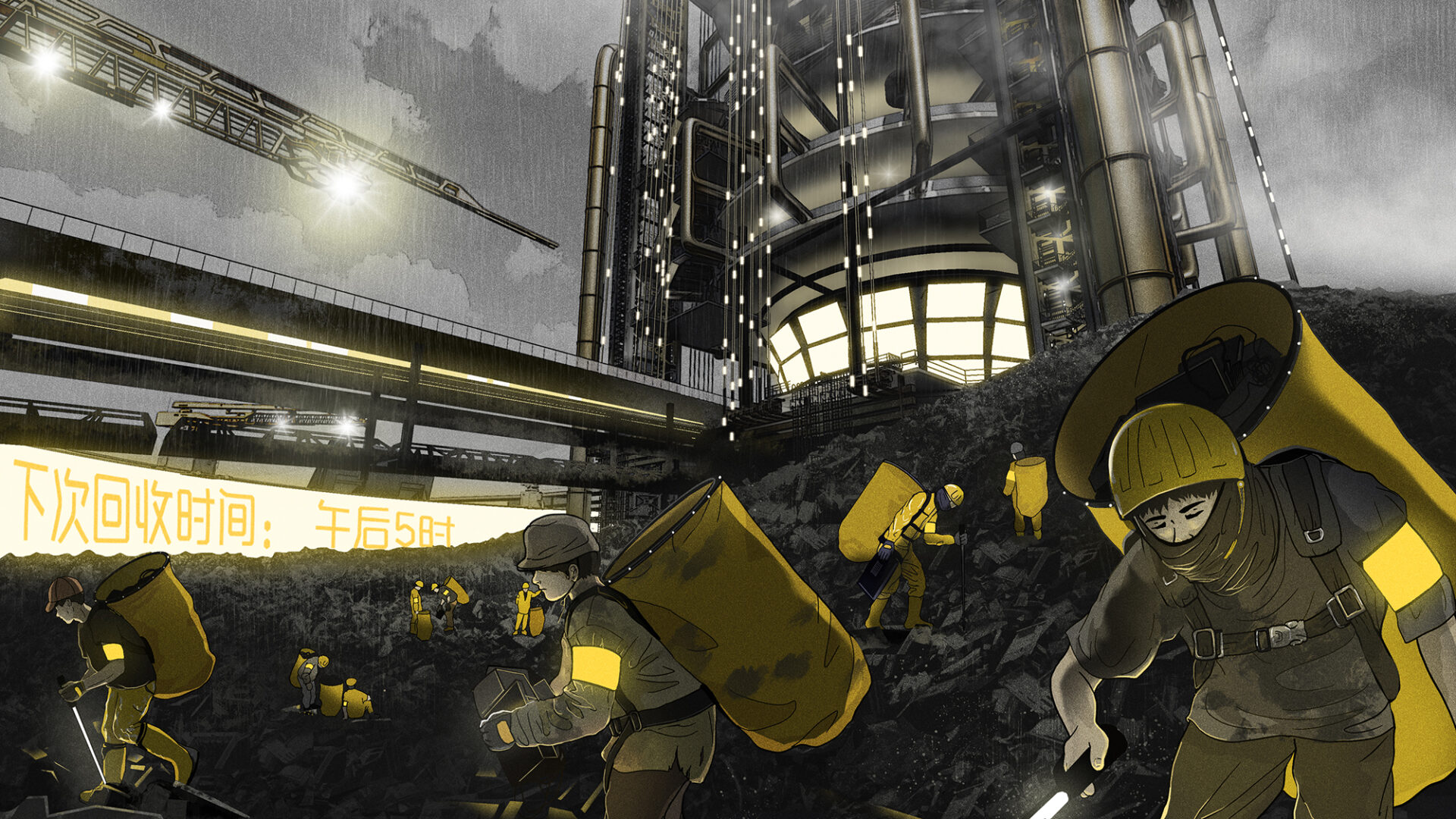
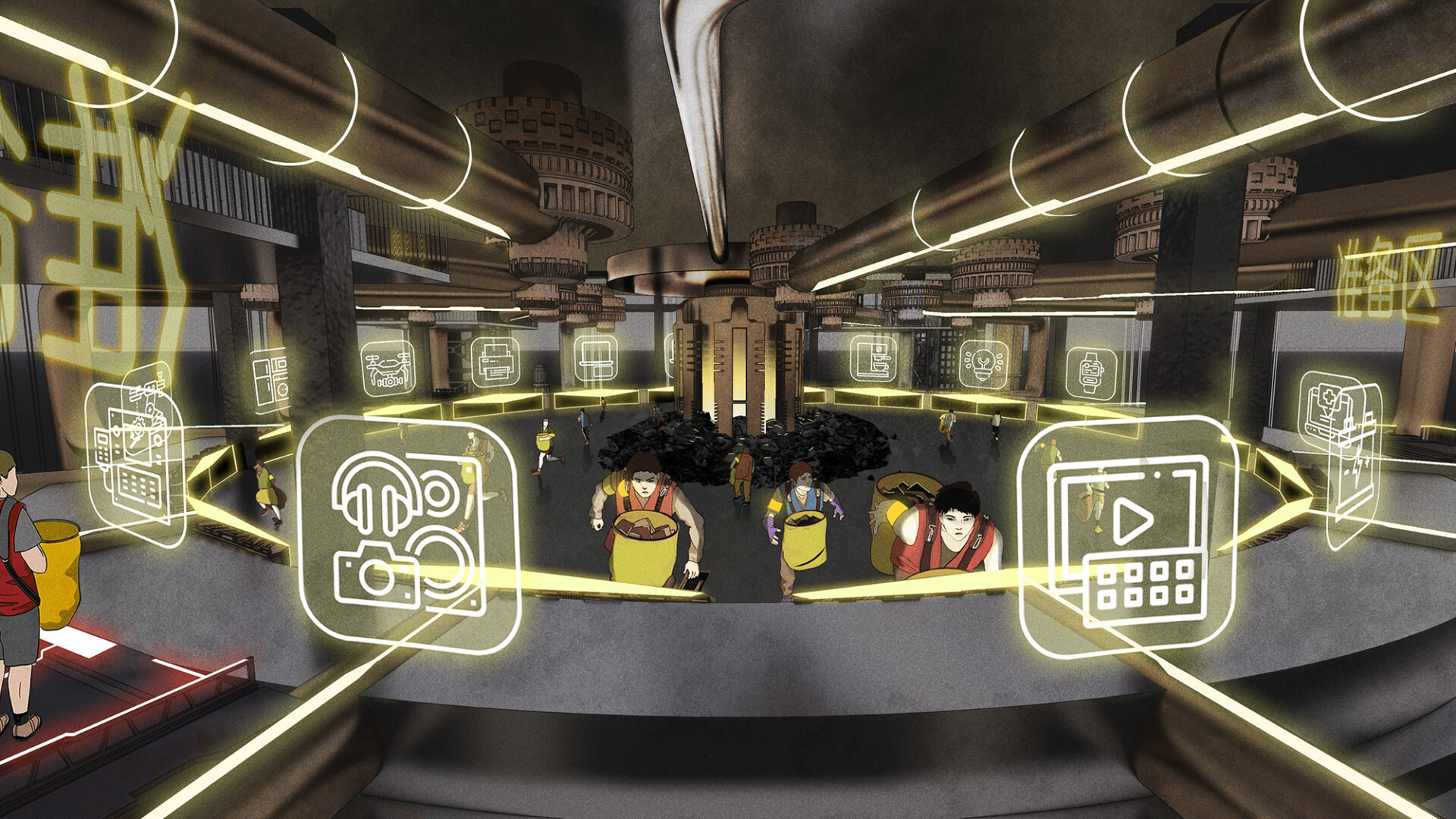
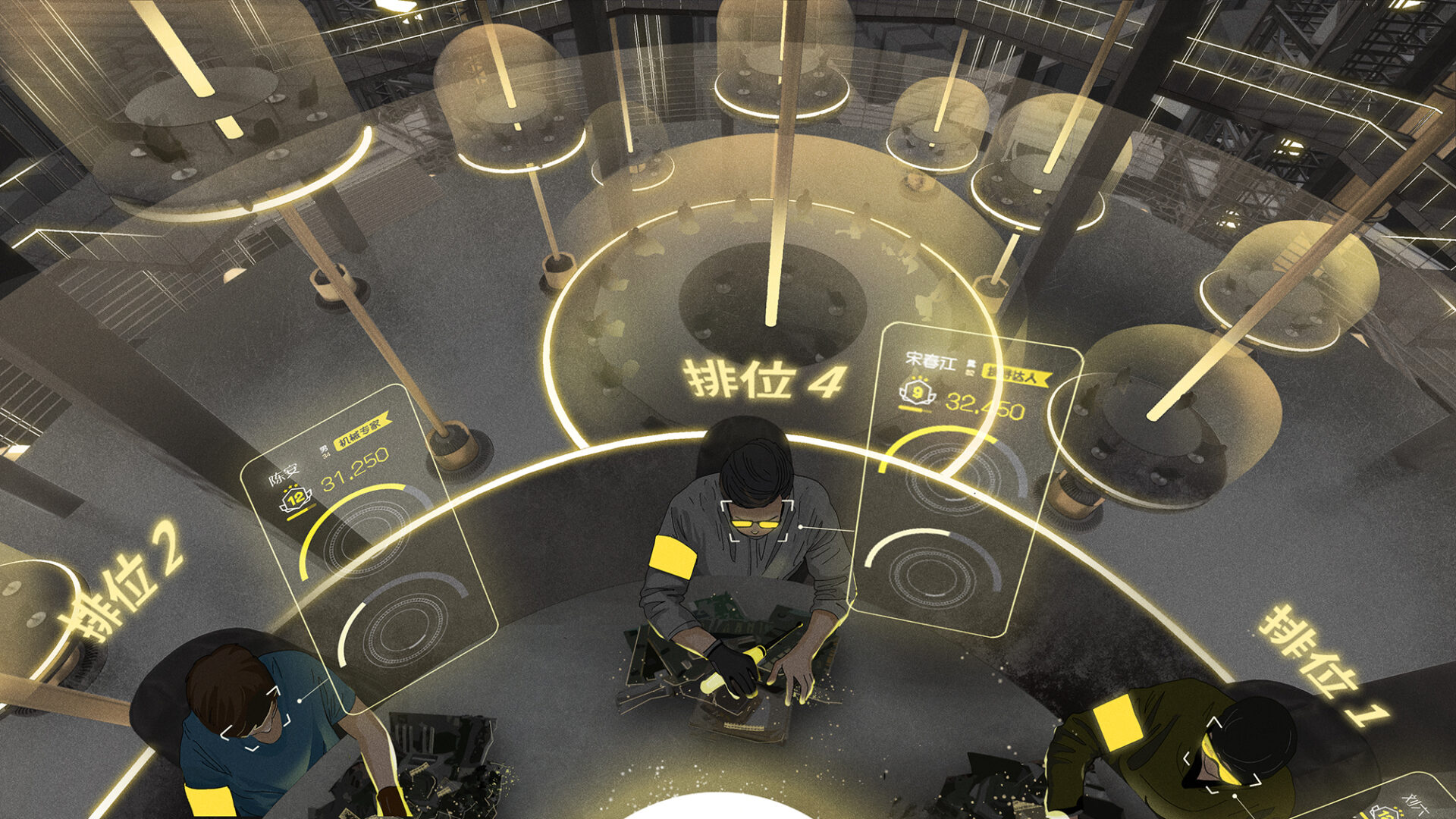
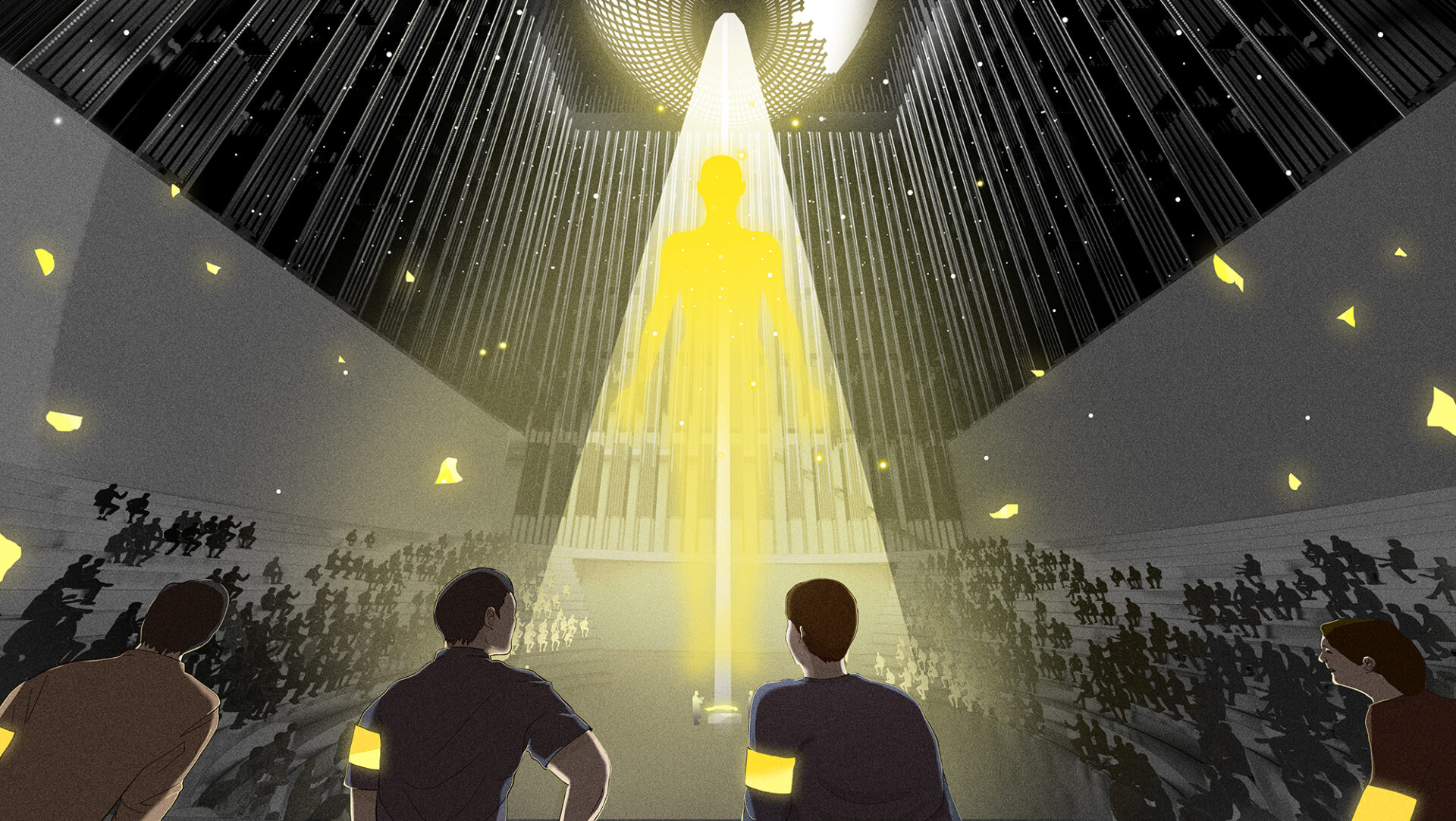
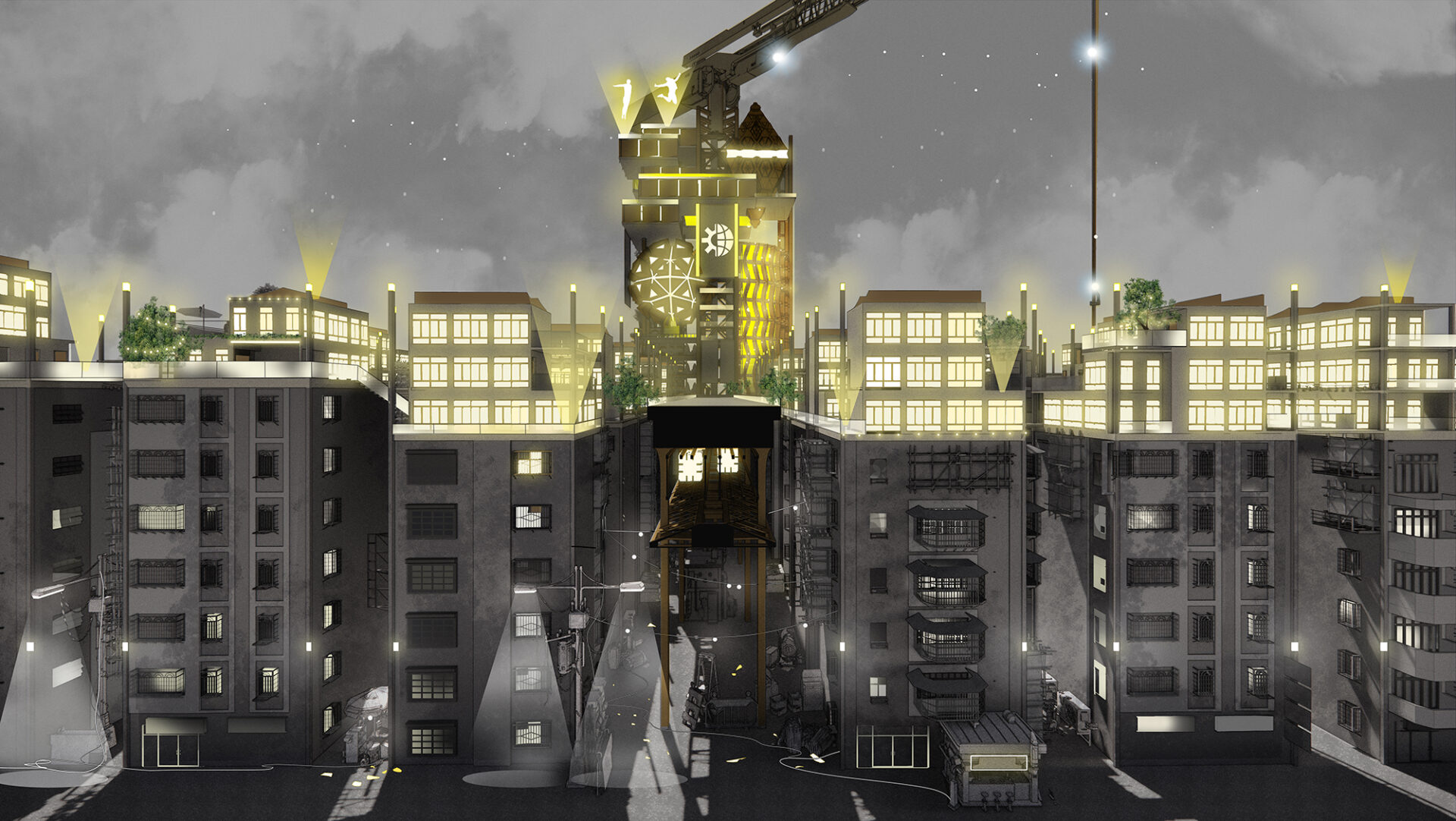
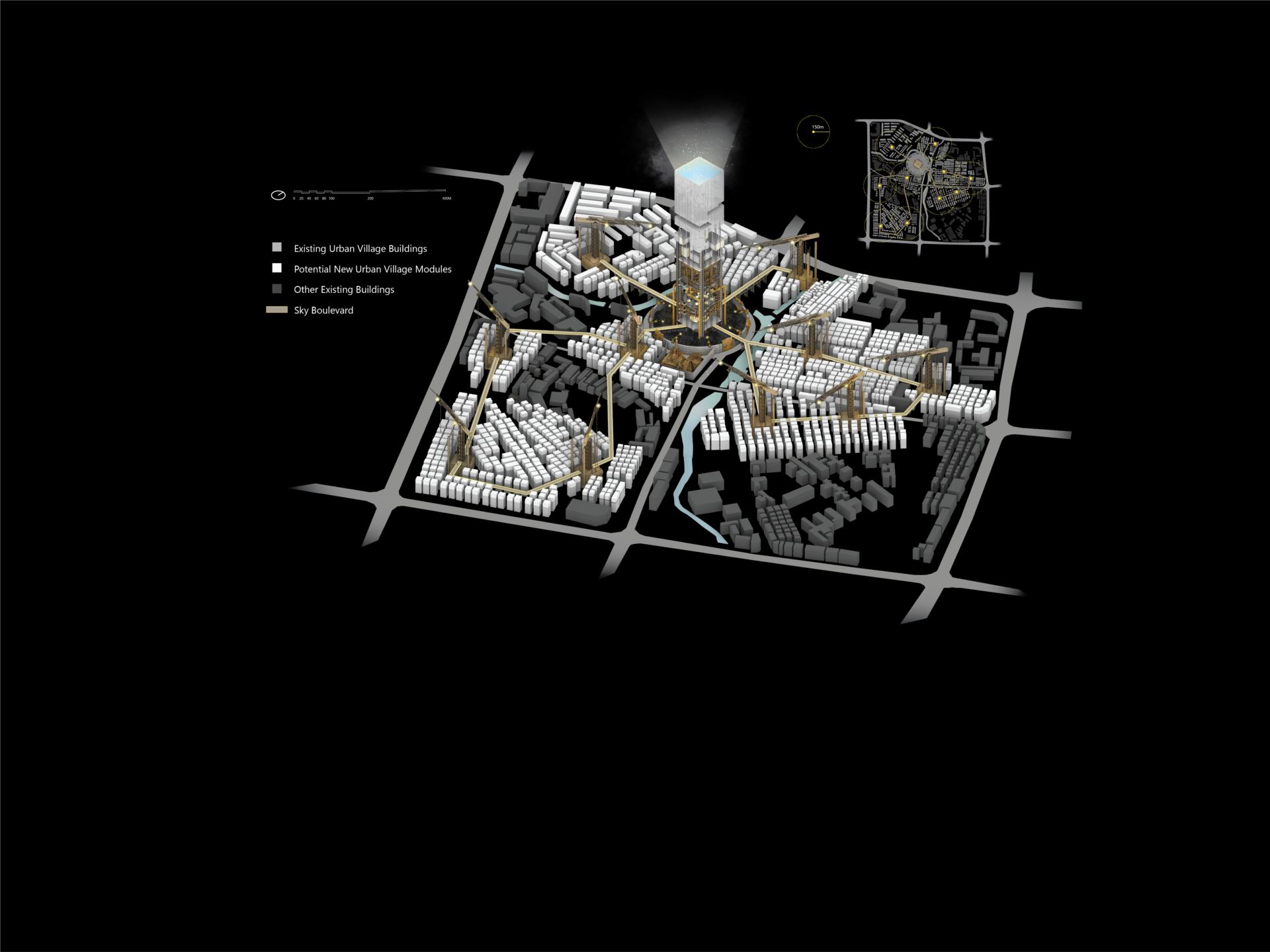
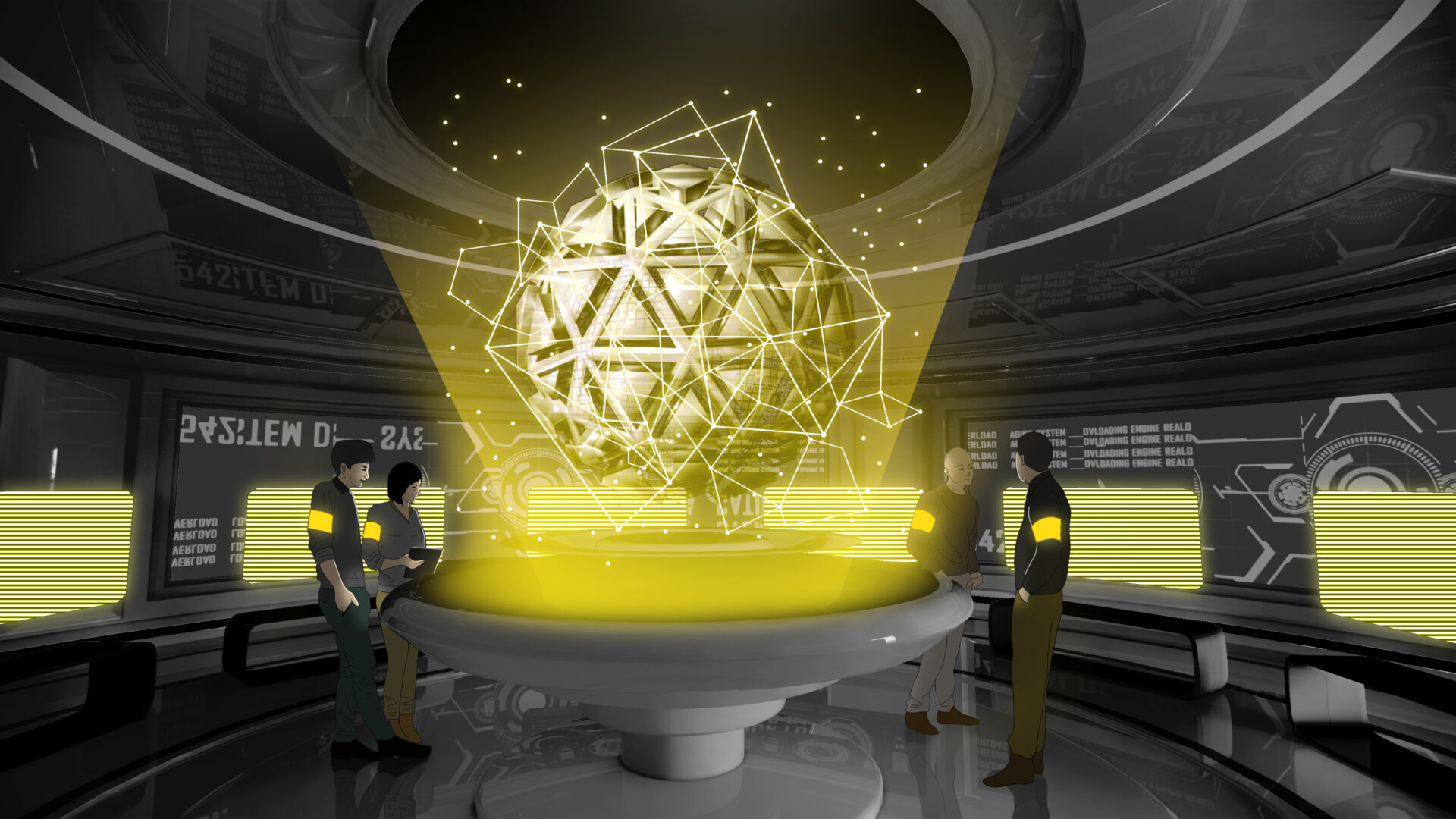
Supervisor's comments:
From the Garden City to the imagined Situationist City, the urban fabric is a testament to its people’s aspirations and underscores the values they embody. But what if aspirations run dry? Does the urban fabric go into an auto disrepair mode as depicted in cyberpunk movies? Throwing its faith behind the famous quote by Winston Churchill ” We shape our buildings; thereafter they shaped us”, this thesis seeks novel spatial strategies through the deployment of video game design tactics to reinvigorate the ambitions of a disenfranchised “useless class” of migrant youths. The result is a new urban paradigm refuelled by a new found aspiration.
- Ar. Chaw Chih Wen